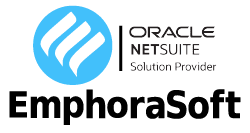
Integrating Emerging Technologies with ERP: The Future of Business Innovation
In today’s rapidly evolving business landscape, Enterprise Resource Planning (ERP) systems stand at a crucial crossroads. Once primarily focused on streamlining back-office operations and centralizing business data, modern ERP systems are now being revolutionized through integration with cutting-edge technologies. This transformation isn’t merely incremental—it represents a fundamental shift in how businesses operate, compete, and innovate.
As organizations navigate the complexities of digital transformation, the convergence of ERP with emerging technologies like artificial intelligence (AI), Internet of Things (IoT), blockchain, and cloud computing is creating unprecedented opportunities. These integrated systems are not just automating routine tasks but are enabling predictive capabilities, real-time decision-making, and entirely new business models.
This comprehensive exploration delves into how these emerging technologies are reshaping ERP systems, the practical benefits they deliver, implementation challenges, and what the future holds for businesses ready to embrace this technological evolution.
The Evolution of ERP Systems: From Back-Office to Strategic Business Platform
The Traditional ERP Landscape
Enterprise Resource Planning has come a long way since its inception. Originally designed to integrate disparate business processes into a unified system, traditional ERP primarily focused on core functions like finance, inventory management, supply chain operations, and human resources. These systems excelled at creating a single source of truth for business data and streamlining operational efficiency.
However, conventional ERP systems had significant limitations. They were often rigid, difficult to customize, and primarily backward-looking—excellent at recording what had happened but less effective at predicting what might come next. Implementation was typically lengthy and complex, requiring substantial resources and often resulting in disruption to business operations.
The Shift to Next-Generation ERP
Today’s business environment demands more than just operational efficiency. Organizations face pressures to be more agile, responsive, and forward-thinking. This has driven the evolution of ERP from a system of record to a strategic platform for business innovation and competitive advantage.
Next-generation ERP systems are characterized by:
- Greater flexibility and modularity
- Enhanced user experiences with intuitive interfaces
- Mobile accessibility for on-the-go decision-making
- Real-time analytics and reporting capabilities
- Open architecture that facilitates integration with emerging technologies
- Cloud-based deployment options that reduce infrastructure costs and complexity
This evolution represents more than just technical improvements—it reflects a fundamental shift in how businesses perceive and utilize ERP. No longer merely a tool for transaction processing and record-keeping, modern ERP serves as the digital core that connects all aspects of business operations while enabling strategic initiatives and innovation.
AI and Machine Learning: Adding Intelligence to ERP
How AI is Transforming ERP Systems
Artificial intelligence represents perhaps the most significant technological advancement reshaping ERP systems. By embedding AI and machine learning capabilities, ERP solutions are transitioning from passive tools that execute predefined processes to intelligent systems that can learn, adapt, and even make recommendations.
Key areas where AI is enhancing ERP include:
Intelligent Automation
AI-powered ERP systems go beyond simple rule-based automation. They can identify patterns, learn from exceptions, and continuously improve their performance. This intelligence enables automation of increasingly complex processes that previously required human judgment, such as:
- Invoice matching and exception handling
- Customer credit approvals
- Inventory optimization
- Production scheduling
- Employee expense validation
For example, an AI-powered ERP can analyze historical payment patterns of customers alongside external economic indicators to predict which invoices are likely to be paid late, enabling proactive collection strategies.
Predictive Analytics
Traditional ERP systems excel at telling organizations what happened in the past. AI-enhanced systems can forecast what will happen in the future with remarkable accuracy.
These predictive capabilities transform multiple business functions:
- Demand forecasting that considers numerous variables beyond historical sales
- Maintenance predictions that prevent equipment failures before they occur
- Cash flow forecasting that accounts for complex factors affecting timing
- Employee turnover predictions based on multiple data points
- Risk assessment in vendor selection and supply chain management
A manufacturing company might leverage these capabilities to predict precisely when machinery will require maintenance based on operational data, preventing costly downtime and optimizing maintenance schedules.
Natural Language Processing
NLP enables more intuitive interaction with ERP systems through:
- Conversational interfaces and chatbots for employee self-service
- Automated data extraction from unstructured documents
- Sentiment analysis of customer communications and social media
- Voice-controlled reporting and queries
- Automated translation for global business communications
Instead of navigating complex menus, users can simply ask questions like “Show me sales by region for the last quarter compared to forecast” and receive instant visualizations and insights.
Machine Learning in ERP: Continuous Improvement
Machine learning algorithms provide ERP systems with the ability to continuously improve their performance based on new data and outcomes. This creates a powerful feedback loop that enhances accuracy and effectiveness over time.
Applications include:
- Learning from approval patterns to streamline future workflows
- Identifying optimal reorder points for inventory based on multiple variables
- Discovering inefficiencies in business processes through pattern recognition
- Improving customer segmentation and targeting based on behavior analysis
- Refining financial forecasts through iterative learning
An example of this in action is a distribution company whose ERP system began with basic inventory management rules but gradually learned the complex seasonality patterns specific to their business, eventually proposing inventory levels that reduced carrying costs by 23% while maintaining service levels.
Internet of Things (IoT): Connecting the Physical and Digital Worlds
ERP and IoT Integration: Creating a Real-Time Enterprise
The Internet of Things represents a network of physical objects embedded with sensors, software, and connectivity that enables these objects to collect and exchange data. When integrated with ERP systems, IoT creates unprecedented visibility into operations and opens new possibilities for automation and optimization.
Real-Time Visibility Across Operations
IoT sensors provide ERP systems with constant streams of real-time data from across the business:
- Production equipment reporting operating conditions and output
- Vehicles transmitting location, fuel efficiency, and maintenance needs
- Warehouse inventory updating automatically as goods move
- Environmental conditions being monitored throughout facilities
- Employee safety equipment signaling potential hazards
This visibility eliminates blind spots in operations and enables immediate response to changing conditions. For instance, a food distribution company can track temperature conditions throughout their cold chain in real-time, with the ERP automatically flagging potential compliance issues before they affect product quality.
Automated Data Collection
IoT devices eliminate manual data entry, dramatically improving both efficiency and accuracy:
- RFID tags automatically tracking inventory movements
- Smart meters measuring resource consumption
- Connected equipment self-reporting production statistics
- Wearable devices logging employee activities and safety compliance
- Environmental sensors recording conditions affecting operations
A manufacturer implementing IoT-enabled ERP might see their inventory accuracy improve from 85% to over 99%, while eliminating thousands of hours previously spent on manual counts and data entry.
ERP and IoT Solutions for Smart Manufacturing
Manufacturing represents one of the most promising areas for ERP and IoT integration, creating what’s often called “smart manufacturing” or “Industry 4.0.”
Key applications include:
Predictive Maintenance
By analyzing data from equipment sensors, ERP systems can predict maintenance needs before failures occur:
- Vibration sensors detecting potential bearing failures
- Temperature monitors identifying overheating components
- Power consumption anomalies flagging inefficient operation
- Operating cycle counters triggering preventive maintenance
- Acoustic sensors identifying unusual sounds indicating wear
This approach typically reduces maintenance costs by 15-30% while extending equipment life and preventing costly unplanned downtime.
Real-Time Production Optimization
IoT-enabled ERP systems can continuously optimize production based on current conditions:
- Adjusting production speeds based on quality sensor feedback
- Rerouting workflows around bottlenecks or equipment issues
- Optimizing energy usage based on production requirements
- Balancing production lines in response to changing conditions
- Fine-tuning process parameters based on environmental factors
A pharmaceutical manufacturer implementing these capabilities might see both quality deviations and energy consumption decrease by over 20%, while increasing throughput.
Connected Supply Chain
IoT extends ERP visibility beyond organizational boundaries into the broader supply chain:
- Tracking materials and finished goods throughout their journey
- Monitoring conditions affecting product quality during transport
- Providing real-time visibility into supplier operations
- Authenticating products to prevent counterfeiting
- Enabling precise estimation of arrival times based on actual conditions
This extended visibility allows organizations to move from reactive to proactive supply chain management, anticipating and addressing issues before they impact operations or customers.
Blockchain Technology: Enhancing Trust and Transparency in ERP
ERP Blockchain Integration: Beyond Cryptocurrencies
While blockchain technology initially gained prominence through cryptocurrencies like Bitcoin, its potential applications for business extend far beyond financial transactions. The core attributes of blockchain—immutability, transparency, decentralization, and smart contracts—make it particularly valuable when integrated with ERP systems.
Building Trusted Business Networks
Blockchain enables ERP systems to establish trusted networks that extend beyond organizational boundaries:
- Creating immutable, transparent records of transactions
- Establishing provenance tracking for materials and products
- Enabling secure sharing of information with business partners
- Eliminating reconciliation processes between different systems
- Creating consensus mechanisms for multi-party processes
For example, a blockchain-enabled ERP can create a trusted record of certifications and compliance documentation across a supply chain, allowing instant verification without time-consuming audits.
Enhancing ERP Security Through Blockchain
Security concerns remain a top priority for organizations implementing or upgrading ERP systems. Blockchain technology offers several security enhancements:
- Cryptographic validation of all transactions
- Distributed storage that eliminates single points of failure
- Immutable audit trails that cannot be altered retroactively
- Granular permission controls through smart contracts
- Reduced vulnerability to centralized system attacks
These capabilities address many traditional vulnerabilities in ERP systems, particularly those involving data integrity and unauthorized modifications.
How Blockchain Improves ERP Security and Transparency
The combination of blockchain and ERP creates significant improvements in several critical business processes:
Supply Chain Transparency
Blockchain enables unprecedented transparency throughout supply chains:
- Tracking components from raw materials to finished products
- Verifying ethical sourcing and sustainability claims
- Documenting compliance with regulatory requirements
- Authenticating luxury or sensitive products
- Creating consumer-accessible histories of products
A food producer implementing blockchain-enabled ERP might provide consumers with the ability to scan a product and see its entire journey from farm to shelf, including certifications and handling conditions throughout.
Smart Contracts for Automated Compliance
Smart contracts—self-executing agreements with terms written in code—enable automated enforcement of business rules:
- Automatically releasing payments when delivery conditions are met
- Enforcing service level agreements with penalties or bonuses
- Executing royalty payments based on verified usage
- Implementing complex multi-party agreements without intermediaries
- Ensuring regulatory compliance through programmed rules
For instance, a construction company might use smart contracts to automatically release progress payments to subcontractors when inspections are verified in the blockchain, eliminating payment delays and disputes.
Multi-Enterprise Business Networks
Blockchain facilitates secure collaboration between multiple enterprises using different ERP systems:
- Creating single versions of truth across organizations
- Eliminating reconciliation processes and disputes
- Enabling direct system-to-system transactions
- Supporting collaborative planning and forecasting
- Streamlining multi-party business processes
A manufacturing consortium might implement a blockchain network connecting their various ERP systems to coordinate production planning, creating efficiencies impossible with traditional interfaces between systems.
Cloud Computing: The Foundation for Next-Generation ERP
ERP Cloud Computing Trends
Cloud computing has fundamentally changed the way ERP systems are deployed, maintained, and utilized. The shift from on-premise to cloud-based ERP represents more than just a change in hosting—it’s a transformation in how organizations approach their core business systems.
The Rise of Cloud-First ERP
Modern ERP deployments increasingly default to cloud implementation rather than on-premise:
- Software-as-a-Service (SaaS) models providing subscription-based access
- Platform-as-a-Service (PaaS) enabling customization and extension
- Infrastructure-as-a-Service (IaaS) supporting more controlled deployments
- Hybrid approaches combining cloud and on-premise components
- Multi-cloud strategies leveraging different providers for specific capabilities
This shift is reflected in market statistics, with cloud ERP now representing the majority of new implementations and growing at over 15% annually.
Benefits Driving Cloud ERP Adoption
Multiple factors are accelerating the move to cloud-based ERP:
- Reduced upfront investment and predictable subscription costs
- Faster implementation timeframes and time-to-value
- Automatic updates providing continuous access to new features
- Scalability to accommodate business growth or seasonal variations
- Enhanced security through provider expertise and resources
- Improved accessibility for remote and mobile workforces
- Built-in disaster recovery and business continuity
Organizations implementing cloud ERP typically report 20-30% lower total cost of ownership compared to equivalent on-premise solutions, while gaining access to innovation at a much faster pace.
Cloud ERP vs On-premise ERP: Key Considerations
While cloud ERP offers significant advantages, the choice between cloud and on-premise deployment remains complex for many organizations. Key factors influencing this decision include:
Strategic Flexibility vs Control
Cloud ERP provides strategic agility:
- Rapid deployment of new capabilities
- Easier integration with external services and partners
- Lower barriers to expansion into new markets
- Reduced technical debt through continuous updates
- Greater focus on business outcomes rather than technology
On-premise offers greater control:
- Complete ownership of all data and processes
- Ability to customize without platform constraints
- Independence from vendor roadmaps and decisions
- Protection of uniquely sensitive information
- Tailored security configurations
Organizations must weigh these considerations against their strategic priorities and competitive landscape.
Integration Requirements
Cloud ERP excels at:
- Native integration with other cloud services
- Pre-built connectors to common business applications
- APIs designed for modern integration approaches
- Support for mobile and IoT device connections
- Simpler integration with business partners and customers
On-premise may be preferred when:
- Deep integration with legacy systems is required
- Highly customized interfaces have been developed
- Real-time integration with manufacturing equipment is critical
- Network limitations affect cloud performance
- Regulatory requirements mandate specific integration approaches
The growing sophistication of integration platforms and services is increasingly mitigating these differences, allowing hybrid approaches that leverage the strengths of both models.
Big Data Analytics: Transforming ERP into a Strategic Intelligence Platform
ERP and Business Intelligence: Beyond Reporting
Traditional ERP reporting focused primarily on operational metrics and financial results. Modern ERP systems have evolved to incorporate comprehensive business intelligence capabilities that transform raw data into strategic insights.
From Data Collection to Strategic Intelligence
This evolution follows a clear progression:
- Data Collection: capturing comprehensive operational information
- Reporting: organizing data into structured views
- Analysis: identifying patterns and relationships in the data
- Prediction: forecasting future outcomes based on patterns
- Prescription: recommending actions to achieve desired outcomes
- Autonomous Decision-Making: automatically implementing optimal actions
Leading organizations are now operating at the predictive and prescriptive levels, with experiments in autonomous decision-making for specific processes.
Real-Time Analytics and Dashboards
Modern ERP analytics provide immediate visibility into operations:
- Executive dashboards showing key performance indicators
- Role-based analytics tailored to specific responsibilities
- Operational alerts highlighting exceptions requiring attention
- Embedded analytics within transaction screens
- Mobile access to critical metrics
These capabilities enable management by exception, focusing attention on areas requiring intervention rather than reviewing routine operations.
ERP and Big Data Analytics: Expanding the Information Universe
Big data analytics extends ERP capabilities by incorporating non-traditional data sources and applying advanced analytical techniques:
Integrating Structured and Unstructured Data
Modern ERP analytics combine traditional structured data with unstructured sources:
- Social media sentiment analysis
- Customer support interactions and feedback
- Equipment maintenance logs and notes
- Supplier performance documentation
- Market news and competitive intelligence
This integration provides context that enhances decision-making. For example, a retailer might combine traditional sales data with social media sentiment analysis to understand not just what’s selling but why certain products are gaining or losing popularity.
Advanced Analytical Techniques
Big data analytics employs sophisticated methods beyond traditional business intelligence:
- Predictive modeling using machine learning algorithms
- Natural language processing of text documents
- Pattern recognition in complex datasets
- Network analysis of relationship data
- Simulation and scenario modeling
These techniques allow organizations to extract insights impossible to discover through conventional analysis. A logistics company might use network analysis to identify non-obvious relationships between seemingly unrelated delivery delays, uncovering systematic issues that traditional metrics would miss.
Digital Transformation with ERP: Creating the Intelligent Enterprise
ERP as the Foundation for Digital Transformation
Digital transformation represents a fundamental reimagining of business processes and models enabled by technology. ERP systems play a central role in this transformation, serving as the digital core that connects various technologies and enables new capabilities.
The Intelligent Enterprise Framework
Leading organizations are building what’s often called the “intelligent enterprise”—a business that leverages technology to:
- Anticipate customer needs before they’re expressed
- Optimize operations continuously in real-time
- Innovate products and services based on actual usage data
- Empower employees with insights and decision support
- Create new business models and revenue streams
ERP serves as the foundation for this approach by providing the integrated data and processes upon which intelligent capabilities can be built.
Technology Stack for the Intelligent Enterprise
The intelligent enterprise typically incorporates multiple technologies in a cohesive architecture:
- ERP as the digital core for transactions and master data
- IoT connectivity extending into physical operations
- AI and machine learning providing intelligent capabilities
- Blockchain ensuring trust and transparency
- Cloud infrastructure enabling scalability and connectivity
- Analytics generating insights across the enterprise
FAQ's
Integrating emerging technologies such as AI, IoT, blockchain, and cloud computing with ERP enhances automation, improves decision-making, and enables real-time data insights. This transformation allows businesses to optimize operations, increase efficiency, and gain a competitive edge in the digital economy.
AI-powered ERP systems enable intelligent automation, predictive analytics, and natural language processing. AI helps in automating repetitive tasks, forecasting demand, optimizing supply chain management, and providing actionable insights, making ERP systems more proactive and strategic.
IoT connects physical assets (like machinery, vehicles, and sensors) to ERP systems, providing real-time data for better decision-making. It improves operational efficiency, enhances predictive maintenance, optimizes inventory management, and ensures seamless supply chain tracking.
Blockchain provides a decentralized, immutable ledger that enhances data integrity, security, and trust. It is particularly useful in supply chain management, compliance tracking, and secure transactions, reducing fraud and streamlining business processes.
Cloud-based ERP solutions offer scalability, cost efficiency, and remote accessibility. They reduce IT infrastructure costs, provide automatic updates, enhance security, and enable seamless integration with other cloud applications and emerging technologies.
Challenges include high implementation costs, data migration complexities, cybersecurity risks, employee resistance to change, and ensuring compatibility with existing legacy systems. A strategic approach with phased implementation and proper training can mitigate these challenges.
AI-driven predictive analytics in ERP helps businesses anticipate demand, optimize resource allocation, detect anomalies, and improve decision-making. It enables proactive strategies, such as predicting equipment failures before they occur or forecasting sales trends accurately.
ERP and IoT integration enable real-time tracking of goods, monitor environmental conditions during transit, and automate inventory updates. This reduces delays, prevents losses due to spoilage or theft, and enhances overall supply chain efficiency.
Yes, blockchain ensures transparent and tamper-proof records, making regulatory compliance more efficient. Businesses can use blockchain for secure document verification, audit trails, and enforcing smart contracts, reducing compliance-related risks and costs.
The future of ERP lies in fully AI-driven, cloud-native, and hyper-connected systems. AI and machine learning will drive automation, IoT will provide real-time operational insights, blockchain will secure transactions, and cloud computing will enhance accessibility, making ERP a strategic digital core for businesses.







